Life at Nexxen with Catherine Dauphin
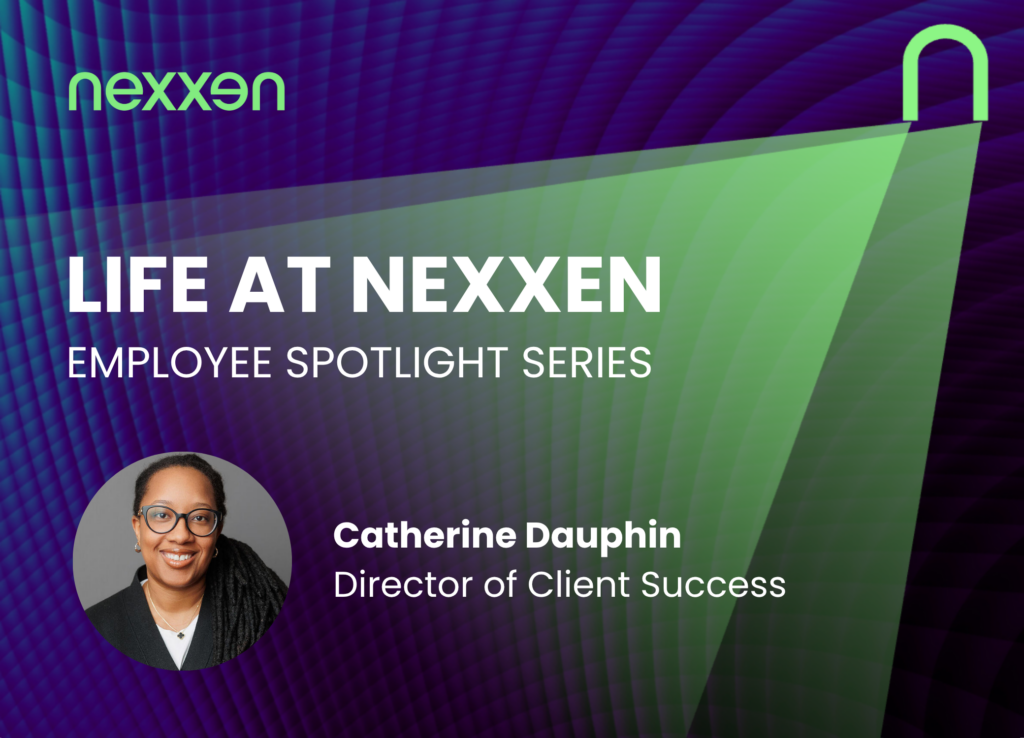
Linkedin Icon-xtwitterlogo-black Life at Nexxen is a blog series spotlighting our employees – from their career journeys and go-to advice to the rituals and activities that make up their days here at Nexxen. In this edition of Life at Nexxen, we spoke with Catherine Dauphin, Director of Client Success from our New York office. Catherine spoke about her path to leadership, what she believes is most important as a manager, and how she spends the first ten minutes of the day. How long have you been with Nexxen? I just celebrated my 14th anniversary, originally joining the company on the Tremor Video side. That’s a long time! Since you’ve been with the company through multiple acquisitions, what has helped you manage the challenges of new teams, processes, and overall change? It’s a new experience with new opportunities for growth. Understanding that with the change, you can look forward to what is coming. There was always excitement with each acquisition, which is why I’ve continued my career here for so many years. What was your first role at Tremor Video? I joined Tremor Video as an Account Manager, recruited by one of the sellers in the auto vertical. I had actually worked previously at an agency specializing in automotive accounts, so she knew I had relevant experience. I was new to video when I started at Tremor; I had the digital experience, but it was mostly display. I learned all about video as an Account Manager, and then progressed into management and higher leadership roles. Did you always want to go into leadership? Or was it something that you naturally gravitated towards as you progressed in your career? I didn’t know from the start of my career that I specifically wanted to achieve a leadership role. It grew out of me becoming a better Account Manager and becoming more senior on the team. I became the go-to person to train any new hires, and that naturally led me towards wanting to pursue a leadership role. I knew I could do well in a leadership role because I truly enjoy helping people. So I worked hard to become a Manager, then a Senior Manager, and now a Director. As a manager, how do you make sure that you’re bringing out the best in your team? It’s important to lead by example. I’m the type of manager that’s willing to roll up my sleeves and do the work alongside my team. I don’t just delegate but often offer to sit side by side to figure out a solution. If someone on my team goes out of office, I will step in and cover their work for them. Not only do I feel like it shows that I’m helping them, but it actually helps me too. My motto is “if you don’t use it, you lose it.” It sounds like you’re an amazing manager. In that vein, how do you handle giving constructive feedback to your team? I emphasize being open and having real conversations. This builds trust and ensures that my team feels that they can talk to me about any issues or challenges that they have. And when you establish that trust, it does ease some of the more challenging but necessary conversations with constructive feedback. As a manager, it’s important to have that rapport so that we can have those kinds of conversations and be productive with them. You mentioned that you’re hiring for your team. When you’re looking for someone to join the team, how do you evaluate people? What kind of traits are you looking for? Due to the nature of our enterprise team, the first thing I look for is someone that has at least a couple years of hands-on-keys experience in other platforms. Historically, when I was on the Strategic Sales side, I was more willing to train someone that was new to advertising. However, now we’re in a position where we do need someone with a solid foundation of experience. Secondly, I look for someone who’s proactive, which is crucial for Client Sucess roles. When you’re working directly with clients and in a service-based business, you have to be proactive. You must think about and anticipate what the needs of your clients are and then get ahead of that. At what point is your team coming in to work with an account? The Client Services team comes in “post-sale.” From there, we’ll onboard the client with trainings on how to utilize our platform. We’ll take them step-by-step through their first campaign setup. We tailor our onboarding program depending on the client’s experience level and needs. After onboarding, we’re their point of contact for the duration of the relationship. A big part of what we do is the day-to-day management of the campaigns, optimization, and troubleshooting. Do you have any rituals to start your day or to unwind from a busy day at work? A lot of my routines revolve around my daughter, who’s 6 years old. But since I’m usually the first in the family to wake up, I start my day with a brief 5 – 10 minute journal entry before I get my coffee going. In terms of winding down, I try to end my day by reading. I’m currently reading Parable of the Sower by Octavia Butler. Read Next Connect With Us Learn how you can effectively and meaningfully leverage today’s video and CTV opportunities with our end-to-end platform, data and insights. Contact Us
The NBA Finals: A Marketing Slam Dunk
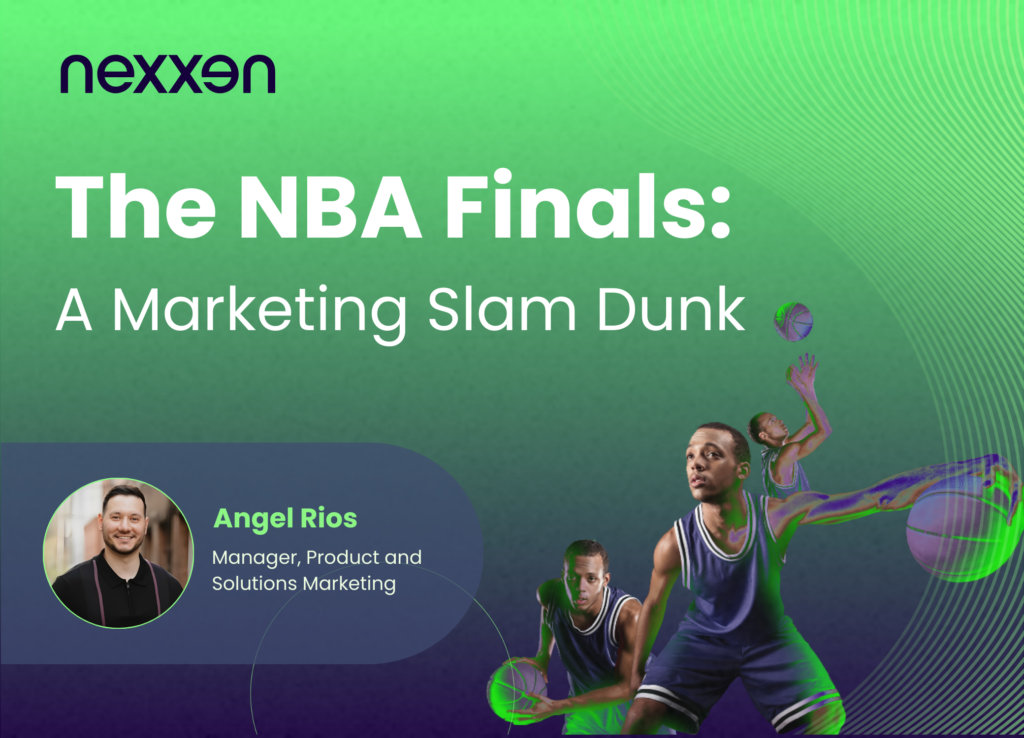
Every June, millions gather around screens to watch the NBA Finals, and brands that align with this cultural phenomenon often find themselves scoring big. Angel Rios, Manager, Product and Solutions Marketing, explores the impact and reach brands can have during this event, and how they can utilize this unmatched opportunity for success.
Life at Nexxen with Stephanie Baghai

Linkedin Icon-xtwitterlogo-black [Author’s Note – At the time of our conversation, Stephanie was a Delivery Manager, thus this article focuses on this team and area of the business.] In this edition of Life at Nexxen, we sat down with Stephanie Baghai, Delivery Manager from our Los Angeles office. We started the conversation with a language skill we found on Stephanie’s LinkedIn profile, discussed how the team handled the general election season, and found out her next travel destination. You have Portuguese listed as a fluent language on your profile, is it your first or second language? I learned Portuguese at the same time as I learned English, but I consider Portuguese my first language. My mother is Brazilian, so I used to spend every summer in Brazil as a kid. Once, after returning from an extra-long visit home, I actually had to register as an ESL student to help re-learn English when I returned to the states. Is there a Portuguese saying or proverb that you really like? “Cada macaco no seu galho” which literally means “each monkey in his own branch.” It’s a reminder to not concern yourself with what others are doing. Did you grow up in Los Angeles? Yes, born and raised in a Brazilian community. I really enjoyed growing up immersed in the culture and the food. And you attended college in the Midwest? For college, I wanted to go somewhere far away and different. I visited Marquette University in Milwaukee and it checked a lot of the boxes I wanted for a university, not least of which was a great business program. Your past career experience utilizes your business and marketing education. Can you explain how you joined the Delivery Management team here at Nexxen? It was a role for the Amobee DSP. They had seen the advertising portion of my Google ad and campaign experience, and thought I’d be a great addition to the team. It was a sliver that I wanted to expand more on. It was nice having that client facing experience in my past role while also having that technical back-end experience. In the beginning, I wasn’t sure what to expect with the role. As the interview process went on, I became very excited and thought it would be a great fit. Now, I’ve been here for 3 years and I really enjoy the work I do. Can you explain how Client Success, Account Management, and Delivery Management teams work together? At Nexxen, we customize our approach to each client. If they want a Delivery Manager or a team that’s more hands-on, we’re happy to provide the support they’re looking for. For some clients, we’ve done in-person training with their team, because they wanted that extra hands-on experience and insight into our DSP. Other clients let us manage their campaigns completely without any explanation. They trust that we’ll be able to outperform our competitors and exceed their needs, so adapting to each client and their campaign needs is one of our big driving factors. How do you decide the campaign delivery strategy – which vehicles you’ll be delivering in? Nearly all my clients are in the political space, so it’s extremely niche in terms of targeting and delivery. They know exactly what districts they want to serve with incredibly specific parameters. In that regard, we’re focused on optimizing each client’s campaign to stand out when everyone else is also competing in the same districts with the same people. This also means really tough competition in this niche market. Oftentimes we’re targeting only a few zip codes with a specific age group, demographic, income, and/or political party affiliation. During election season, particularly for swing states, it’s us and everyone else competing for the same six states. In this way, it’s different in terms of a strategy for a consumer good or even generic brand awareness campaign. Are you and your team members assigned to specific regions within the U.S.? No, we serve all regions. Many of our clients are based in Washington D.C., but we have team members on both coasts and in the central regions. This ensures that there is always someone available to our clients whenever they need us. The last few weeks before a general election, however, the whole team is essentially running 24/7. Leading up to the election, how did you and the team stay grounded during such an intense period? During such a busy time, it helps that each member of the team is as invested as you are. Knowing that you’re not alone and that what we’re doing is making a significant impact for our clients helps keep you motivated. It’s a true all-hands-on deck collaborative effort – the team can swap hats at any given time, jumping in and out of their regular roles and responsibilities. You know that we always have someone to step in and make things happen. What are hobbies that you enjoy? I love to travel. I love experiencing vastly different places, food, cultures, languages and people. I think it’s incredibly insightful, rewarding, and a privilege that’s helped me in my personal (and professional) growth. Ok one more question since said you mentioned travel: What is your favorite place that you’ve traveled to so far? And what’s the place you’re looking forward to visiting in the future? For my favorite, I have two answers. My most unexpected favorite place was Egypt. I knew I would enjoy the trip, but I was blown away by how well preserved and intact the history and ruins were. My second answer is Peru, because it was just so beautiful. I went with five of my best friends, and we did a five-day hike to Machu Pichu. It was a once in a lifetime kind of experience – it was picturesque, and very challenging – in a good way. For future travels, I’m looking forward to going to Taiwan. Particularly for the night markets, because I love street food. Read Next Connect With Us
Get in the Game! Best Practices for Programmatic Advertising in Live Sports
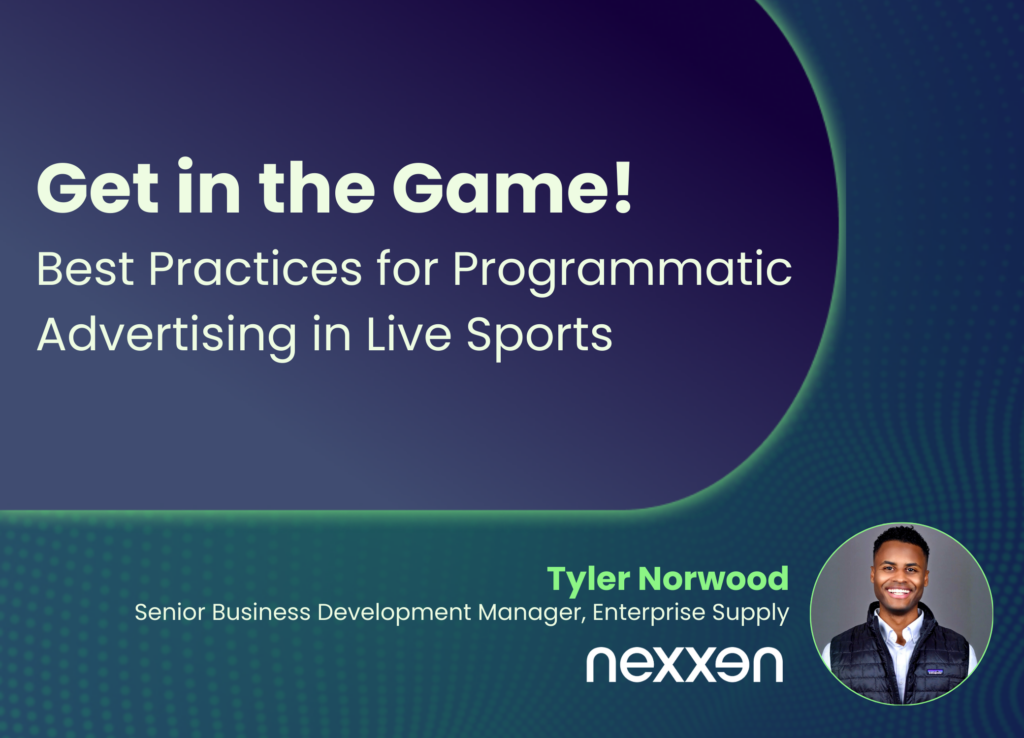
Today, 73% of live sports viewers are watching on CTV – so now is the time to reach these engaged viewers! Tyler Norwood, Senior Business Development Manager, Enterprise Supply at Nexxen shares best practices and pro tips on how to ensure your programmatic spend on live sports is as effective as it can be.
Life at Nexxen with Kristin Grumhaus
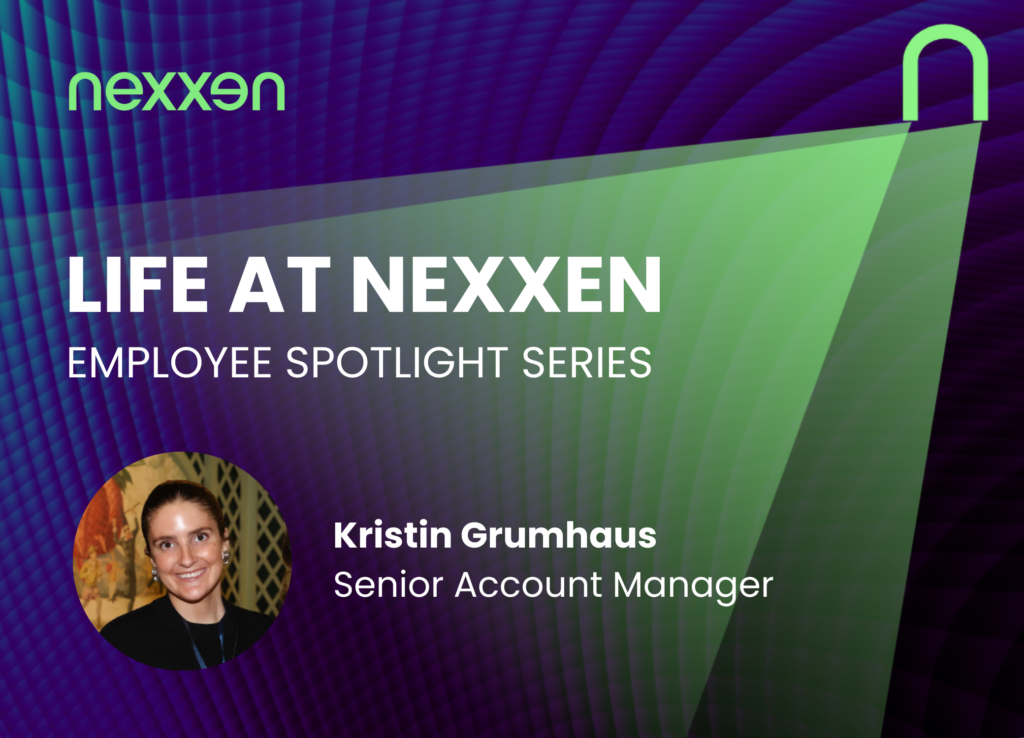
We’re kicking off this year’s Life at Nexxen series with Senior Account Manager, Kristin Grumhaus. Kristin shares why she wanted to work on our Client Success team, what she loves about working with our clients now, and her latest thriller novel recommendation.
How AI Is Transforming Advertising During the Big Game
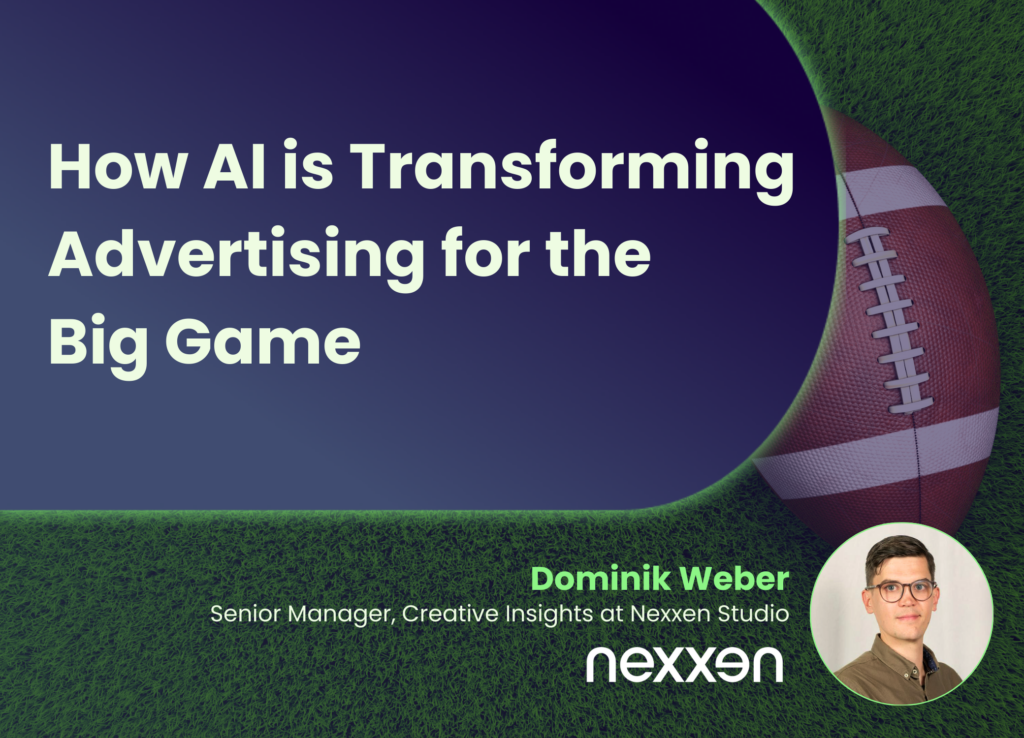
The Big Game is about more than just football — it’s the pinnacle event for advertisers. Each year, brands invest millions in 30-second ad spots, enlisting celebrities and using humor to create memorable moments. But what truly drives success for these ads? Is it the celebrity cameo, the emotional narrative or something else entirely? Nexxen Studio uses cutting-edge AI content recognition technology as well as unique emotional measurement tools to uncover answers. By analysing thousands of ads across millions of data points, we can unlock what makes them resonate with audiences — and how advertisers can use these findings to their advantage. Decoding Ad Performance with AI Our AI-powered video content recognition solution identifies every element within a video — celebrities, people, animals, objects and even actions — providing a detailed blueprint of an ad’s content. By pairing this with facial coding technology (which measures real-time emotional reactions and attention levels), we’re able to gain unparalleled insight into how audiences respond to different elements of an ad. Let’s take Chris Pratt’s moustache-clad appearance in Pringles’ 2024 ad as an example. Our AI tools identified Chris Pratt’s presence and pinpointed exactly when he appeared on screen. Simultaneously, emotional analysis revealed spikes in viewer attention during his scenes. This data, combined with performance metrics, showed that the ad outperformed the average Big Game spot, with Chris Pratt playing a vital role in that win. But Pringles’ success isn’t an isolated case. We found that ads featuring celebrities generated 9% higher viewer engagement than the average on football’s biggest night. However, this insight comes with a caveat: while celebrities enhance ads during the game, they don’t necessarily have the same effect in other contexts. For holiday ads, as an example, featuring fireplaces, snow, Christmas trees or animated characters boosts performance, while celebrities have little impact. And any fitness-related content tends to negatively affect engagement in this context. During the Big Game, however, celebrities, sports-related activities and dogs consistently enhance performance. Wild animals, on the other hand, are less successful in driving positive viewer engagement. (It’s unclear into which category the unforgettable Puppy Monkey Baby falls.) The Role of AI in Shaping the Future of Advertising While AI-generated ads have advanced significantly, the creative talent of human storytellers remains irreplaceable. What AI excels at, however, is delivering the insights needed to inform and refine creative strategies. AI can identify which celebrity resonates with a specific demographic as well as the types of objects or themes that evoke the strongest emotional response and enable hyper-targeted personalization. These insights empower advertisers to optimize their campaigns and gain a competitive edge. At Nexxen, we believe the future of advertising lies in the connection between and combination of human creativity and AI-driven insights. AI sharpens strategies, while human ingenuity brings stories to life, ensuring brands connect with audiences in the most meaningful way. Read Next
Charting the Future at Connexxion ’25: Nexxen’s Exploration of ‘What’s Next’

Nexxen’s second annual sales conference, Connexxion ’25, was held last month in the vibrant city of New Orleans, serving as a convergence point for discussions about the future. Over the course of a few jam-packed days, more than 200 global attendees were immersed in a series of insightful sessions and panels exploring pathways for growth and innovation – not just for Nexxen as an organization, but for our clients, our partners and our industry as a whole. The concept of ‘What’s Next’ was the driving force behind each conversation — encouraging everyone to envision the possibilities within our fast-evolving landscape. After a rousing introduction from our Chief Commercial Officer, Chance Johnson (as well as a special appearance by New Orleans’ very own L.B. Landry marching band!), Will Lee – CEO of Adweek – took to the stage with an inspiring keynote, detailing why ‘Flux is the New Flex.’ Shedding light on emerging trends – including the proliferation of AI – Will’s insights underscored why keeping pace with change is crucial, particularly in an industry like media (a common theme throughout Connexxion ‘25). From there, we heard from executives across our organization – as well as a few clients – about their shared visions for the year ahead and hopes for the future. From elevating client servicing and enhancing customer relationships (more on that below!) to refining our brand and value proposition, from advancements to our product suite to changes to our stock structure – all signs point to 2025 being a year of continued growth for Nexxen. Tyrone Edwards – an authority on customer-centric selling – also made a special guest appearance, captivating attendees with his insights into building resilient, customer-focused strategies. Spread out over two days, Tyrone led us through sessions and exercises emphasizing the importance of actively listening to clients and offering unique solutions to their challenges, reinforcing our commitment to create meaningful partnerships that drive mutual growth. Of course, while our sights were, and are, set on the future, we also took the time to look back and celebrate major accomplishments from the past year (while also having some good, old-fashioned NOLA fun!). 2024 was a banner year for Nexxen – particularly in terms of our financial results – and the Nexxellence Awards Ceremony paid salute to the teams and individuals who made those results possible. Our final dinner at the iconic Brennan’s also gave us an opportunity to recognize each other’s wins, with a toast from our CEO Ofer Druker capping off the night. The exchanges and conversations that took place over these few days in New Orleans are already shaping ‘what’s next’ for us, with teams truly hitting the ground running. For this reason (among many others), Connexxion ’25 was more than just a conference — it was a launchpad for new ideas and relationships, a reminder that meaningful growth demands both compassion and collaboration. And we can’t wait to see – and influence – what’s next. Huge thanks to our partner Volant Events, the Four Seasons New Orleans and everyone who worked in tandem to make Connexxion ’25 such a memorable success. The customer voice https://3911929.fs1.hubspotusercontent-na1.net/hubfs/3911929/2025/DROPS/Connexxion%20Customer%20Video/Nexxen4minv6.mp4 Read Next
Four Winning Brand Strategies for the Big Game
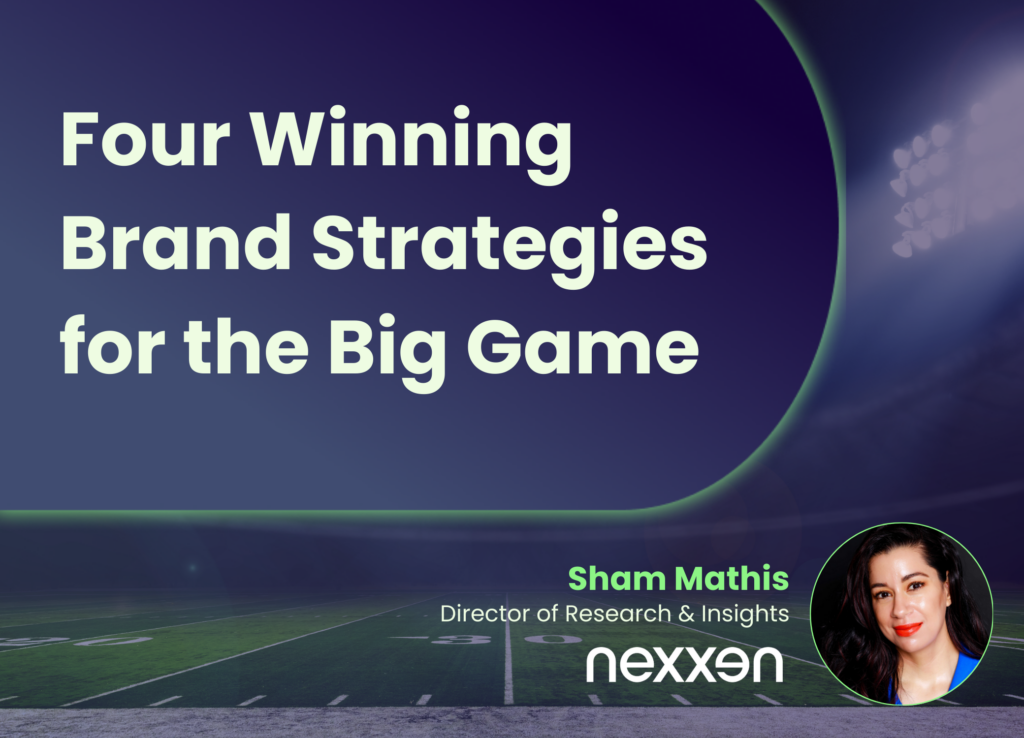
In 2024, more than 123 million viewers tuned into the Big Game, making it the most-watched TV event of all time. Think on that – in the history of American television viewership, last year’s showdown between the Chiefs and 49ers took the number one spot, beating out every other pivotal media event (like the moon landing). And here’s the real kicker: those millions of fans weren’t all glued to the same screen. Our research suggests 2025 will be similar, with viewing plans varying by audience. Sure, 40% of viewers will catch the game on cable or satellite (the top choice for Boomers and Gen-X). But 51% (namely Millennials and Adult Gen-Z) are expected to stream it this year, while the rest will likely watch on a website or through other means. This fragmentation isn’t an obstacle, though – it’s an opportunity. Football’s biggest night is more than a three-hour block on TV; it’s a flurry of activity across phones, streaming platforms and social media. For advertisers, this means that – instead of relying on a monolithic approach (where’s the fun in that, anyway?) – you can use data-driven strategies to meet viewers on the platforms and devices that most resonate with them. Here are four ways to create a brand moment worthy of the Big Game this year: 1. Use Audience Data to Your Advantage Understanding the different ways your audience engages with content during the game will help you craft a winning strategy. After sports fanatics, for instance? Say less. These highly engaged, often Millennial viewers watch live sports weekly (87%) and prefer ad-supported platforms (83%), so try activating campaigns aligned with pre-game analysis or live commentary. 52% of Millennials or Gen-Xers, on the other hand, plan for this night weeks ahead of time, engaging with hosting tips, recipes and decor ideas. Target them with lifestyle content tied to food and event essentials. Using data on fan viewing habits to identify where they are most engaged and activating campaigns that align with their typical behaviors will help you deliver more relevant and impactful messaging, maximize engagement and ensure your brand is present during the moments that matter most. 2. Optimize Your Ad Before You Activate Let’s be honest: the game is as much about ads as it is football. And creating a stand-out campaign requires ensuring your creative resonates before it even goes live. Pre-launch testing helps gauge how audiences respond. Use surveys, attention measurement or emotional response analysis to fine-tune messaging, visuals and tone for maximum impact. Time and again, research has shown that optimizing creative is the key to success when it comes to resonating with audiences, especially if those optimizations are data-driven. By optimizing your ad, you can make sure it drives both measurable and memorable impact – the ultimate touchdown. Football’s biggest night is more than a three-hour block on TV; it’s a flurry of activity across phones, streaming platforms and social media. Football’s biggest night is more than a three-hour block on TV; it’s a flurry of activity across phones, streaming platforms and social media. 3. Dig Deeper with Real-Time Audience Insights Knowing where your audience is watching is just the start – to refine and strengthen your campaign, you’ll need to tap into real-time digital and TV behavior. Some hints? Ads placed alongside live commentary or player stats drive 39% and 36% engagement, respectively, helping your message reach fans who are actively interacting with the game. Nearly 33% of viewers also engage with hosting tips, creating a perfect placement opportunity for brands that align with the more social side of Sunday night. 4. Blend TV and Digital Metrics to Extend Reach and Reduce Waste With viewers spread across platforms, the challenge isn’t just reaching them—it’s doing so efficiently. Blending data sources like ACR, set-top box and app analytics allows you to track cross-screen behaviors, reduce duplication and optimize frequency for a seamless viewer experience. These insights also reveal gaps and overlap between TV and digital audiences, helping you strategically allocate placements. For instance, reach Millennials and Adult Gen-Z on streaming, but engage Boomers and Gen-X on cable. By unifying metrics and refining placements, you can maximize reach and impact across this fragmented landscape. Ready to make the play? The Big Game is your time to shine. Whether you’re building hype before kickoff, engaging fans on second screens or keeping the moment alive after the final whistle, there’s room for every brand to have an impact. It’s not always the biggest budgets that win; it’s the smartest strategies. Read Next
Innovating at Scale – Practices from Within Nexxen Engineering (Part 2)
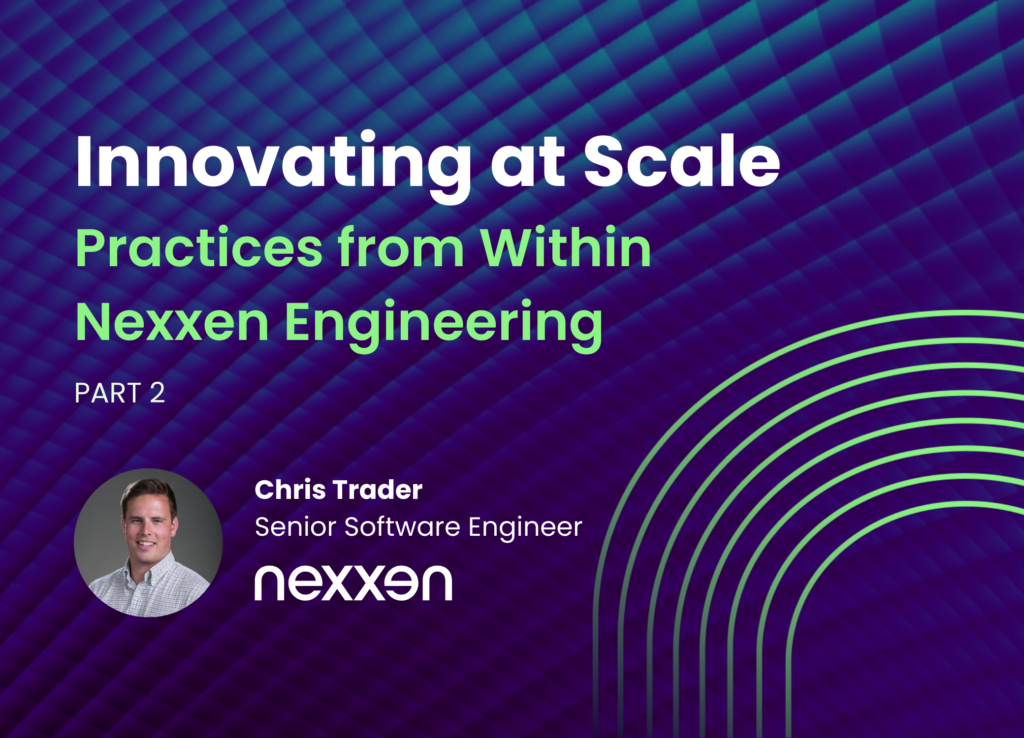
At Nexxen, the stability of our platform is core to our engineering team’s mission, ensuring that our customers have a seamless experience while we continue to innovate at a fast pace. To achieve this, we rely on our ability to make small, incremental changes, push them to our production systems quickly, and immediately see the impact those changes have on the overall health of our platform. In my previous post, we discussed why and how we test in production. In this article, we’ll dive into our observability platform and our culture of ownership. Observability-Driven Development In a highly concurrent, low-latency system like Nexxen’s, validating a change requires us to examine the production environment holistically. This is where our observability platform, Atlas, comes into play. Atlas is an internally white-labeled, self-hosted Grafana LGTM stack maintained by our infrastructure team. It provides us with real-time visibility into the health and performance of our production systems, enabling us to quickly detect and diagnose issues. With Atlas, every engineer has access to a wealth of telemetry data, including metrics, logs, and traces, which they can use to gain insights into how their changes are affecting the system. At Nexxen, some of the first questions we ask when developing a new feature or making changes to our system are: How will we know if this change is working as intended when it’s released to production? How will we be alerted if the change is not performing as expected? These questions are at the heart of our observability-driven development approach. By defining clear metrics upfront and ensuring that we have the necessary telemetry in place to track those metrics, we can quickly assess the impact of our changes once they’re deployed to production. This proactive approach to observability helps us catch potential setbacks early to avoid negative impacts on our customers. Observability-driven development not only helps us identify and resolve issues more efficiently, but also enables us to continuously optimize our systems. By analyzing the telemetry data collected by Atlas, we can identify performance bottlenecks, resource inefficiencies, and opportunities for improvement. We proactively make optimizations and architectural changes that enhance the overall reliability and scalability of our platform. A Culture of Ownership Perhaps most importantly, Nexxen has a culture of ownership where every engineer is given the knowledge, tools, responsibility, and trust they need to own their work end-to-end. We all know how our systems work, and nothing is “thrown over the wall” for another team to run or monitor in production. To support this mindset, we have invested heavily in production-related tooling and practices. Engineers are encouraged to actively engage with production systems daily, as that is where our users interact with our code and infrastructure. We have built robust guardrails and safety nets that enable us to confidently make changes. By fostering a culture of trust, ownership, and continuous improvement, we are able to deliver exceptional value to our customers while maintaining a stable and reliable platform. Conclusion At Nexxen, we pride ourselves on our platform’s stability and our ability to continue to improve our technology while we grow. Through realistic testing in production environments, how we track success metrics and analyze our performance data, and fostering a culture of ownership throughout our engineering teams, Nexxen’s platform delivers both innovation and stability. Read Next
Innovating at Scale – Practices from Within Nexxen Engineering (Part 1)

At Nexxen, the stability of our platform is core to our engineering team’s mission, ensuring that our customers have a seamless experience while we continue to innovate at a fast pace. To achieve this, we rely on our ability to make incremental changes, push them to our production systems quickly, and immediately see the impact those changes have on the overall health of our platform. I will highlight a few practices the Nexxen engineering team uses to innovate quickly at scale, while minimizing change risk, and keeping our production systems stable. Specifically in this article, we’ll discuss why and how we test in production rather than stage environments. Testing in Production When done with the right safeguards and observability in place, testing in production enables engineers to gain immediate confidence in their changes and ship quicker than otherwise possible. It is also, arguably, safer than traditional “staging environment” testing, which doesn’t capture the full complexity of real-world conditions, making it less reliable as a predictor of production readiness. While staging environments serve a purpose, they are often unable to fully mimic the complexity of live systems, especially at scale. No amount of preparation and testing in a development or staging environment is the same as running your code on a production machine. The hardware is not the same, the network is not the same, the data is not the same, nor are the patterns and behaviors of interactions between different system components. At Nexxen, we shorten the feedback loop and test directly in production through canary deployments, leveraging the power of Kubernetes to make this process seamless. Canary deployments involve rolling out changes to one or two production servers, limiting exposure to a small percentage of traffic, and closely monitoring the performance and behavior of the canaries before releasing the changes more broadly. Operating at scale both enables and requires us to do this. For example, Nexxen’s DSP serves millions of requests per second across four datacenters, with an average latency under 80 milliseconds. This, of course, requires a substantial amount of hardware. We’re able to target a subset to test new changes, but also requires a substantial amount of precision – just a small increase in garbage collection time or ten milliseconds of additional latency could be detrimental to overall system performance. Testing anywhere but production doesn’t inspire confidence. We still follow thorough SDLC (Software Development Lifecycle) procedures, such as passing unit and integration tests, undergoing code reviews, utilizing feature flags to manage new functionality, and proper approvals before any change is applied to production. However, Nexxen has invested heavily in modernizing our CI/CD pipelines, ensuring that we can rapidly and safely deploy, as well as roll back changes across every part of our production system. This modernization enables us to deliver features faster without compromising the stability of our platform. Testing in production is the ultimate quality control checkpoint, ensuring that our changes work as intended in the real-world environment where they will ultimately run. In the next article, we’ll explain further by exploring our observability platform and our culture of ownership. Read Next
